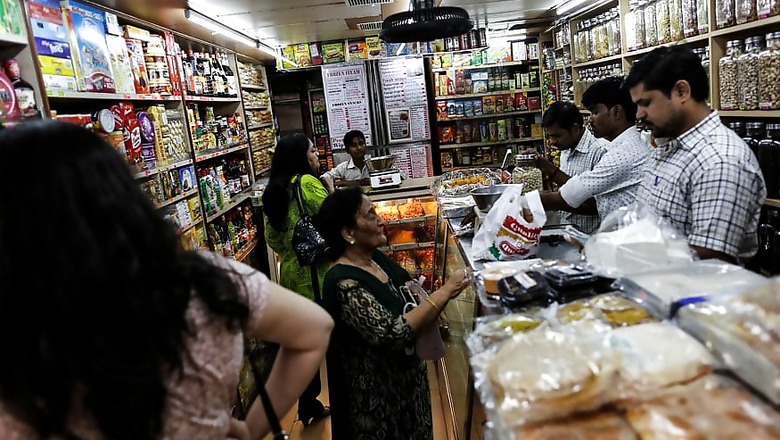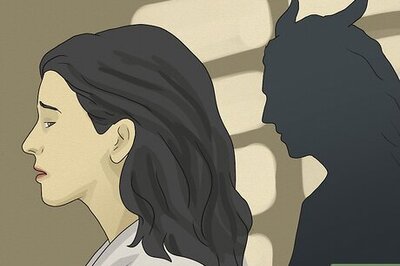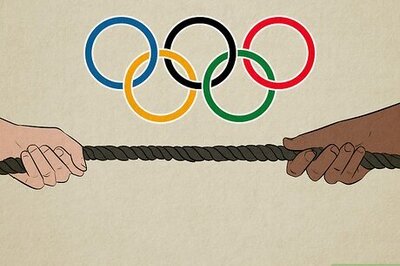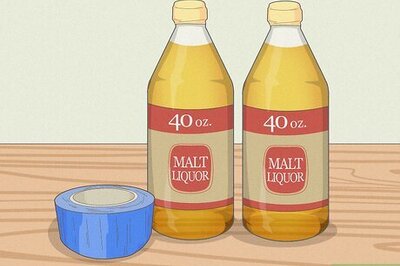
views
New Delhi: Amid a slowdown in economy and protests by traders, particularly in poll-bound Gujarat, Goods and Services Tax Council has decided to overhaul the indirect tax regime, reducing 28% tax on 178 items to 18% or less.
While businesses across the country have welcomed the move which is likely to help revive the demand, opposition parties claimed that the government had to bite the bullet as they had suggested from Day One that 18% should be the maximum tax on goods and services, except a few items like alcohol and tobacco products.
The liberal tax rates, however, come at a cost of Rs 20,000 crore on exchequer.
Only 50 out of 228 items have been retained in the 28% rate slab. Additionally, the 18% slab has also been pruned to 12% and 5%.
“We have rationalized certain items from the 28% to the 18% or even less. Optically, there are few items that shouldn’t be at 28% that were there earlier. There were 228 items in the 28% slab, 178 out of which have been shifted out of the slab. Cess items such as luxury items, sin goods, white goods, auto parts, cement, paint among others are the only ones remain in 28% category,” said finance minister Arun Jaitley.
At its 23rd meeting in Guwahati on Friday, the GST Council decided to drop items used by common man and middle class from the highest tax slab. Further, Assam finance minister Himanta Biswa Sarma said the 18% slab has been rationalised to 12% and 5%.
For consumer interest, rate for all restaurants has been brought down to 5%, without input tax credit, confirmed Haseeb Drabu, finance minister, Jammu and Kashmir. This was done because the restaurants, according to government, did not transfer the benefit of input credit to the consumers.
The new rates will be applicable from November 15, 2017.
Citing the items shifted to lower tax slab, the finance minister said, “Detergents, marble, flooring, toiletries have been moved from 28% to 18%. Armoured fighting vehicles along with one more item have been shifted from 28% to 12%. Thirteen items have been moved from 18% to 12%. Six items have been shifted from 18% to 5%. Eight items from 12% to 8% and 6 items 5% to nil.”
Addressing the conference, finance and revenue secretary Hasmukh Adhia said, “Return filing procedure till March 31, 2018 has been easened even more. Filing of return 3B will continue till March 31. All taxpayers will file only GSTR1 for this year. Penalty for late filing for nil return filers will be Rs 20 per day, compared with Rs 200 per day earlier. For tax filers having liabilities, the penalty has been slashed to Rs 50 per day from Rs 200 per day.”
Government is expecting revenue losses of up to Rs 20,000 crore, which it hopes will be compensated by widening of tax base.
Amit Mitra, West Bengal finance minister, says, “Tax losses to the tune of Rs 60,000 crore for the Centre and Rs 30,000 crore for the states have already taken place.”
GST Council largely consists of state finance ministers headed by Union FM Arun Jaitley.
Bihar deputy chief minister and finance minister Sushil Kumar Modi said goods used by common man have been removed from the 28% slab. “Only luxury goods and items such as tobacco and cigarettes have been kept in the 28% slab,” he said.
The Rate Fitment Committee had proposed keeping 68 items in the top bracket.
Industrial production grew at a slower pace of 3.8% in September, primarily due to subdued performance of the manufacturing sector along with a contraction in output of consumer durables.
Factory output measured in terms of the Index of Industrial Production (IIP) rose 5% in September last year and 4.55 in August this year, data released by the Central Statistics Office (CSO) revaealed on Friday.
Narendra Modi Cabinet’s Group of Ministers (GoM) had also suggested that eating out at hotels that have room tariff of more than Rs 7,500 should attract a uniform 18% rate, which so far fell under the 28% bracket. With regards to traders, the GoM came up with a two-pronged approach under the composition scheme. It suggested that traders who want to exclude sale proceeds of tax-free items from turnover can pay 1% GST. However, those who pay tax on total turnover, the tax rate was proposed at 0.5%.
Criticising the move, former finance minister Yashwant Sinha said, “India’s FM did not apply mind while implementing GST.” Sinha was in Patna addressing a symposium organised by JDU dissident Uday Narayan Chaudhary.
Congress Vice-President Rahul Gandhi posted a comment on Twitter: “We will not allow BJP to impose a Gabbar Singh Tax on India. They cannot break the back of the small and medium businesses, crush the informal sector and destroy millions of jobs.”
Delhi deputy CM and finance minister Manish Sisodia posted a tweet saying GST on many essential commodities like paints and motor parts continue to be at 28%, despite opposition demand to reduce it. “BJP government is having to swallow its ego,” he added.




















Comments
0 comment